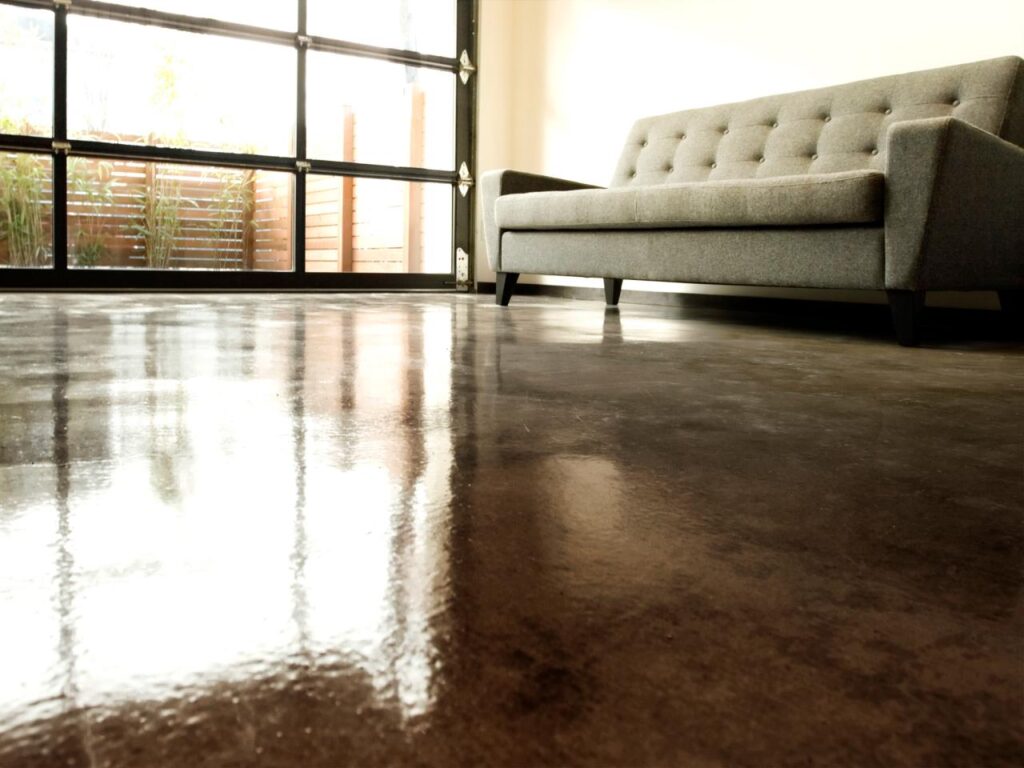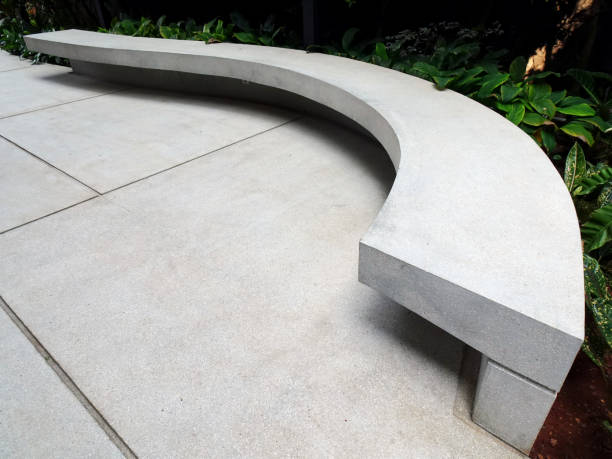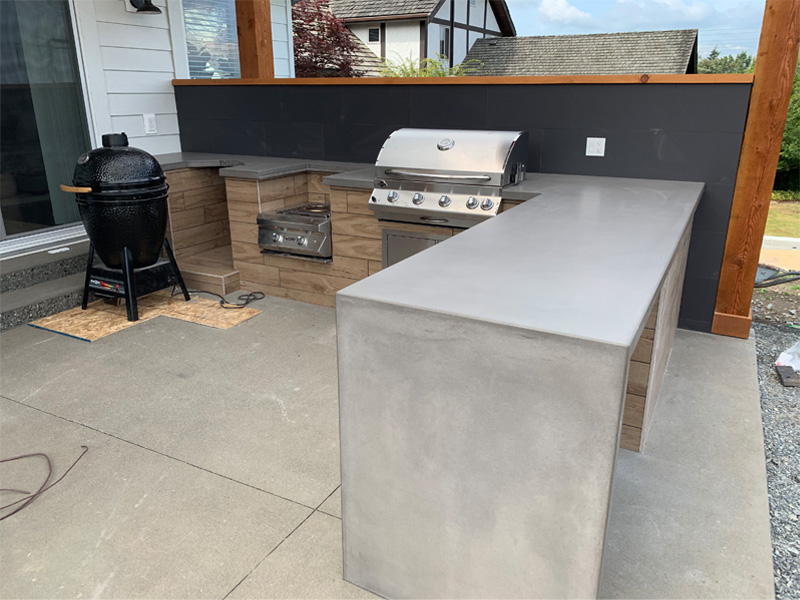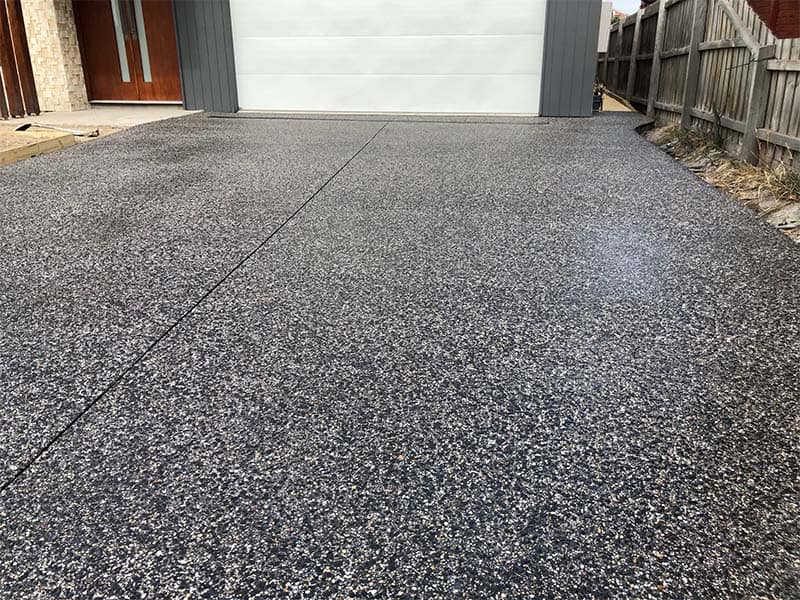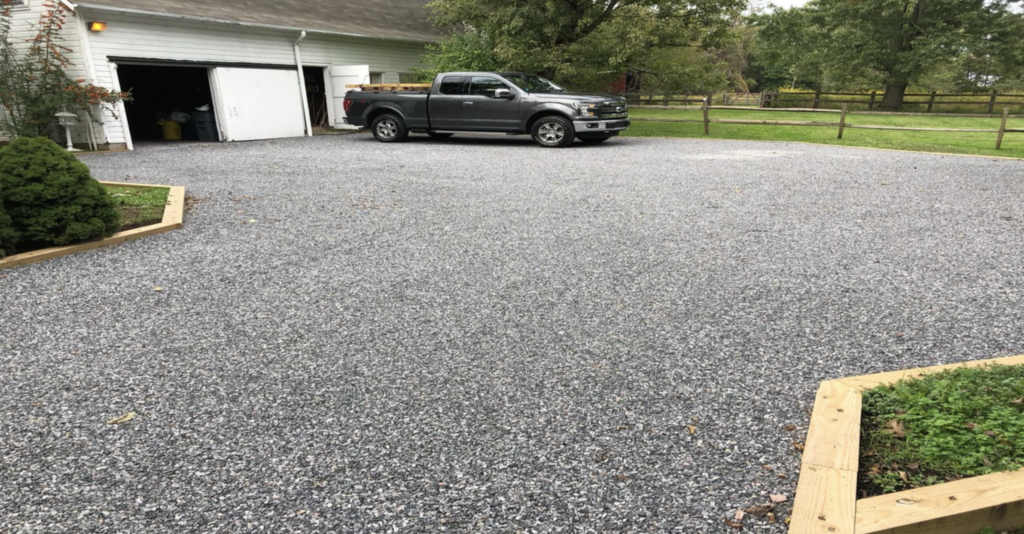Welcome to our comprehensive guide on whether it’s okay to pour concrete on dirt. If you’re tackling a DIY project or simply curious about construction practices, you’ve likely come across this question. Properly pouring concrete is crucial for ensuring the longevity and stability of any structure, be it a patio, driveway, or foundation. In this post, we’ll delve into the intricacies of concrete pouring, exploring the importance of a stable base, debunking common myths, and providing you with practical steps and expert insights to achieve the best results. Let’s get started on understanding why the foundation beneath your concrete matters so much.
Pouring concrete directly on dirt is generally not recommended as it can lead to issues like settling, cracking, and uneven surfaces. For a stable, long-lasting concrete structure, it’s essential to properly prepare the base by compacting the dirt, adding a layer of gravel for drainage, and possibly installing a vapor barrier. These steps help ensure the concrete cures correctly and maintains its integrity over time.
- Understanding Concrete And Its Requirements
- The Role Of Dirt As A Base
- Common Practices And Myths
- Proper Preparation For Pouring Concrete
- Potential Consequences Of Pouring Concrete On Dirt
- Case Studies And Expert Opinions
- Alternative Solutions
- FAQs: About Is It OK to Pour Concrete On Dirt?
- Can you pour concrete directly on dirt?
- Why is a stable base important for concrete?
- What are the risks of pouring concrete on an unprepared dirt base?
- How do you prepare dirt for pouring concrete?
- What is the purpose of a gravel base under concrete?
- What tools are needed to compact dirt before pouring concrete?
- Can I use sand instead of gravel under concrete?
- What is a vapor barrier and why is it important?
- Is it necessary to use reinforcement like rebar or wire mesh in concrete?
- What are some common myths about pouring concrete?
- Conclusion
Understanding Concrete And Its Requirements
What is Concrete?
Concrete is one of the most versatile and widely used construction materials in the world. At its core, concrete is a composite material made up of three primary components: cement, water, and aggregate. The cement acts as a binding agent, which, when mixed with water, forms a paste that coats the surface of the aggregate particles and fills the voids between them. The aggregate, which can be a mixture of sand, gravel, or crushed stone, provides the bulk and strength of the finished product.
When these components are combined, a chemical reaction known as hydration occurs. This reaction is crucial because it causes the mixture to harden and gain strength over time. The ratio of these ingredients can vary depending on the specific requirements of the project, but the basic principle remains the same: the cement-water paste binds the aggregate together, creating a solid, durable material that can withstand significant loads and environmental conditions.
Concrete’s Dependence on a Stable Base
A crucial aspect of any concrete project is ensuring that the concrete is poured onto a stable and well-prepared base. The importance of a stable base cannot be overstated, as it directly affects the structural integrity and longevity of the concrete. A stable base supports the concrete, distributes loads evenly, and prevents issues such as cracking, settling, and shifting.
The preparation of a stable base involves several steps. First, the soil beneath the concrete must be properly compacted. Compaction increases the density of the soil, making it less likely to shift or settle over time. Additionally, a layer of gravel or crushed stone is often added to provide further stability and improve drainage. This helps to prevent water from accumulating beneath the concrete, which can lead to erosion and weakening of the base material.
Failure to properly prepare the base can lead to a range of problems. One of the most common issues is cracking. When the base is unstable, the concrete can flex and move, leading to the development of cracks. These cracks can compromise the structural integrity of the concrete and may require costly repairs. Additionally, an improperly prepared base can cause the concrete to settle unevenly, leading to a surface that is not level. This can be particularly problematic for structures like driveways and sidewalks, where an uneven surface can create tripping hazards and other issues.
In summary, understanding the composition of concrete and the necessity of a stable base is fundamental for any successful concrete project. By ensuring that the base is properly prepared, you can enhance the durability and performance of your concrete, ultimately extending the lifespan of the structure and reducing the need for maintenance and repairs.
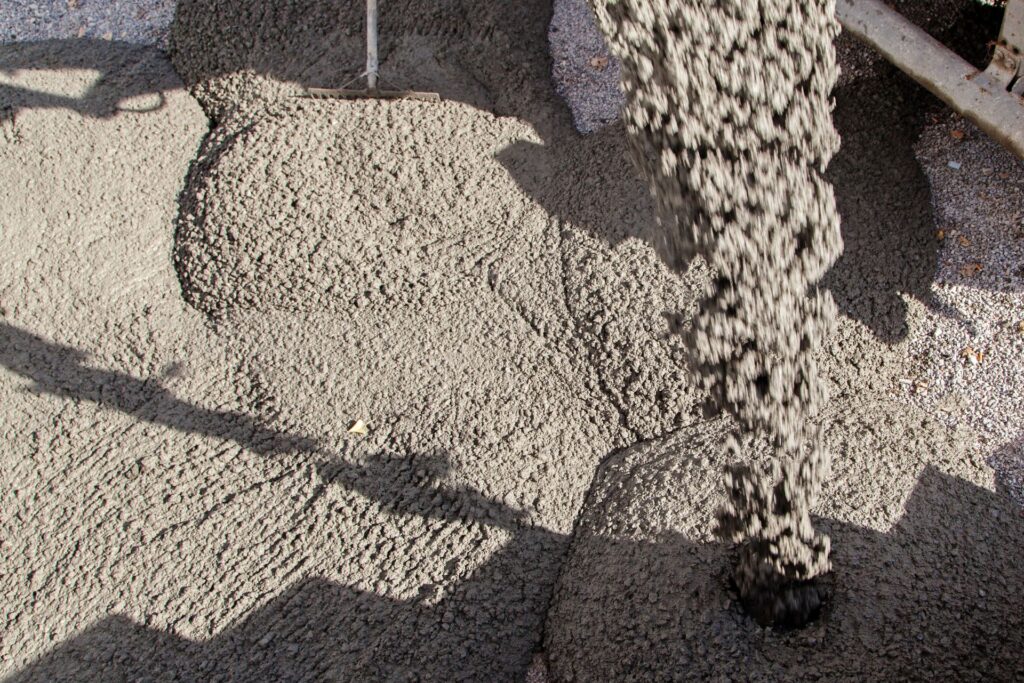
The Role Of Dirt As A Base
Characteristics of Dirt
When we talk about dirt, or soil, as a base, it’s important to understand that not all soils are created equal. Different types of soil have distinct properties that can significantly impact their suitability for use as a base.
Clay Soil: Clay is known for its fine particles and high water retention capacity. While this makes it great for gardening in some respects, it can be problematic as a base material. Clay tends to expand when wet and shrink when dry, leading to potential issues with stability.
Sandy Soil: In contrast, sandy soil has larger particles and drains water more quickly. This characteristic can be beneficial for creating a stable base, as it reduces the likelihood of water-induced swelling and shrinking. However, its loose nature means it needs to be well-compacted to serve effectively as a base.
Loamy Soil: Often considered the ideal garden soil, loamy soil is a balanced mix of sand, silt, and clay. It retains moisture well while providing good drainage and is generally more stable than pure clay or sand. For base purposes, loamy soil can be quite effective if properly compacted.
Understanding these differences is crucial when preparing a site for construction or landscaping, as the choice of soil can directly influence the durability and stability of the final structure.
Compaction and Stability
The stability of any construction or landscaping project often hinges on how well the base soil is compacted. Compaction is the process of using mechanical means to reduce the air gaps between soil particles, increasing its density and stability.
Why Compaction Matters: Properly compacted dirt creates a firm and stable base that can support heavy loads without shifting or settling. This is particularly important for structures like driveways, patios, and buildings, where stability is crucial for longevity and safety.
Methods of Compaction: There are several methods to compact soil, including using hand tampers for small areas and mechanical compactors for larger spaces. The choice of equipment often depends on the size of the project and the type of soil being compacted.
Risks of Poor Compaction: Failing to adequately compact the soil can lead to a range of issues. Poorly compacted dirt is prone to settling, which can cause uneven surfaces and structural damage over time. Cracking is another common problem, especially in paved areas, as the base shifts and settles unevenly under the weight of the surface layer.
In summary, the type of soil and its compaction play pivotal roles in ensuring a stable and durable base for construction and landscaping projects. By understanding the properties of different soils and the importance of proper compaction, you can help ensure the longevity and success of your project.

Common Practices And Myths
Myth: Pouring Concrete Directly on Dirt is Fine
Many homeowners and even some novice builders believe that pouring concrete directly on dirt is an acceptable practice. This myth likely originates from a desire to cut costs and save time. However, while it might seem convenient, this practice can lead to significant issues down the line.
Pouring concrete directly on dirt without any preparation can result in uneven settling, cracking, and ultimately, a shorter lifespan for your concrete structure. Dirt is not a stable base; it can shift and settle over time, especially with changes in moisture levels. When concrete is poured directly on dirt, it lacks the necessary support to maintain its integrity. As the dirt moves, so does the concrete, leading to cracks and breaks.
Moreover, dirt can absorb moisture from the concrete, which affects the curing process. Proper curing is essential for concrete to reach its maximum strength and durability. When dirt absorbs water from the concrete, it disrupts this process, resulting in weaker concrete that is more susceptible to damage.
Best Practices in Construction
To ensure a durable and long-lasting concrete structure, proper base preparation is crucial. Here are the industry standards and best practices for preparing a base before pouring concrete:
1. Excavation and Grading: Begin by excavating the site to the required depth and grading it to ensure proper drainage. The ground should be level and free of debris.
2. Compacting the Soil: Use a mechanical compactor to compact the soil. Compacted soil provides a stable base that reduces the risk of shifting and settling.
3. Adding a Sub-Base Layer: A sub-base layer of gravel, sand, or a mix of both is essential. This layer acts as a cushion and provides stability. It also helps with drainage, preventing water from pooling under the concrete, which can lead to erosion and weakening of the base.
4. Installing a Vapor Barrier: In areas where moisture is a concern, a vapor barrier should be placed on top of the sub-base layer. This barrier prevents moisture from seeping up from the ground and into the concrete, which can cause issues like efflorescence and mold growth.
5. Using Reinforcement: Depending on the type of concrete structure and its intended use, reinforcement such as rebar or wire mesh may be necessary. Reinforcement adds strength and helps prevent cracking.
6. Proper Mixing and Pouring: Ensure that the concrete mix is prepared according to the specifications needed for the project. The concrete should be poured evenly and compacted to eliminate air pockets, which can weaken the structure.
By following these best practices, you can avoid the pitfalls associated with pouring concrete directly on dirt. A well-prepared base not only ensures the longevity and durability of your concrete structure but also saves you from costly repairs and maintenance in the future. Always remember, investing time and resources into proper base preparation pays off in the long run with a sturdy and resilient concrete surface.

Proper Preparation For Pouring Concrete
Step-by-Step Guide
1. Site Preparation
Proper site preparation is the foundation of a successful concrete pour. Start by clearing the area of any vegetation, rocks, or debris. It’s essential to remove all organic material, as it can decompose and cause the concrete to settle unevenly. Once the site is clear, use a shovel or heavy machinery to level the surface. A flat and even base is crucial for the concrete to distribute weight evenly and prevent cracks.
2. Compacting the Dirt
After clearing and leveling the site, the next step is compacting the dirt. Proper compaction is vital as it prevents the ground from shifting under the weight of the concrete. You can use a hand tamper for small areas or a mechanical plate compactor for larger spaces. Compacting the soil reduces the air gaps, ensuring a solid foundation. Make multiple passes over the entire area to achieve uniform compaction.
3. Adding a Gravel Base
Adding a gravel base is a critical step that many overlook. The gravel layer, typically 4-6 inches thick, serves two primary purposes: it facilitates drainage and provides additional stability. Without proper drainage, water can accumulate under the slab, leading to soil erosion and slab movement. Spread the gravel evenly and use a rake to level it. Once the gravel is in place, compact it to create a solid base.
4. Installing a Vapor Barrier
Moisture can be a significant issue for concrete, leading to problems like mold growth and structural weakening. Installing a vapor barrier helps prevent moisture from seeping up through the ground into the concrete. Use a high-quality polyethylene sheet, ensuring it covers the entire gravel base with overlapping seams. Tape the seams to ensure there are no gaps. This barrier will protect your concrete from moisture-related damage in the long term.
5. Reinforcement
Concrete is strong in compression but weak in tension, which is why reinforcement is necessary. Using rebar (reinforcing bars) or wire mesh increases the concrete’s tensile strength, making it more resistant to cracking. Place the rebar or wire mesh in the center of the slab, ensuring it is adequately supported and not touching the ground. For large pours, tie the rebar together with wire ties to maintain the correct spacing. This reinforcement will ensure your concrete remains durable and can withstand significant loads and stress over time.
Following these detailed steps ensures that your concrete project starts on the right foot, providing a stable and durable surface. Proper preparation is key to avoiding common pitfalls and ensuring the longevity of your concrete installation. From clearing the site to reinforcing the slab, each step plays a critical role in the success of your project.

Potential Consequences Of Pouring Concrete On Dirt
Structural Issues
Settling and Uneven Surfaces
Pouring concrete directly on dirt can lead to significant structural issues, starting with settling and uneven surfaces. Dirt, by nature, can be inconsistent in terms of density and stability. When concrete is poured on such a base, it may not have the uniform support needed to maintain an even surface. Over time, the dirt can shift or compact under the weight of the concrete, causing the slab to settle unevenly. This can result in unsightly dips and slopes, which are not only unattractive but can also pose safety hazards. Uneven surfaces can lead to trip hazards, making the area unsafe for pedestrians and potentially leading to liability issues.
Cracking and Premature Wear
Another major consequence of pouring concrete on dirt is the increased likelihood of cracking and premature wear. Without a solid, stable foundation, the concrete is more susceptible to stress. As the dirt beneath it shifts, it can create pressure points within the concrete slab. These pressure points are often where cracks begin to form. Over time, these cracks can expand, compromising the integrity of the entire structure. Furthermore, the lack of a proper base can lead to water accumulation beneath the concrete, which can exacerbate the cracking process through freeze-thaw cycles and erosion. This not only shortens the lifespan of the concrete but also diminishes its aesthetic and functional qualities.
Financial Impact
Cost Implications of Repairs and Rework
The structural issues that arise from pouring concrete on dirt often lead to significant financial repercussions. Repairing uneven or cracked concrete can be an expensive and time-consuming process. In many cases, the entire slab may need to be removed and replaced, especially if the damage is extensive. This rework not only incurs additional material and labor costs but also disrupts the use of the space, which can be particularly problematic for businesses or homeowners who rely on the area for daily activities. The cost of these repairs can quickly add up, far exceeding the initial savings of skipping a proper base preparation.
Long-term Value and Durability Concerns
Beyond the immediate costs of repairs, pouring concrete on dirt can have long-term financial implications due to concerns about the durability and value of the property. Concrete surfaces that are prone to settling and cracking do not hold up well over time, which can reduce the overall lifespan of the structure. This diminished durability means that property owners may need to invest in more frequent maintenance and replacements, increasing the long-term costs of ownership. Additionally, the presence of uneven and cracked concrete can negatively impact property values. Potential buyers may be wary of purchasing a property with such visible and potentially costly issues, which can make it harder to sell the property at a desirable price.
In summary, while pouring concrete on dirt may seem like a quick and cost-effective solution, the potential structural issues and financial impacts make it a risky choice. Proper base preparation is crucial to ensure the longevity, safety, and value of concrete surfaces. Investing in a stable foundation can prevent the settling, cracking, and financial burdens associated with inadequate preparation, ultimately providing better outcomes for property owners.

Case Studies And Expert Opinions
Real-Life Examples
Understanding the practical implications of construction projects requires looking at real-life examples. These examples can provide invaluable insights, showcasing both success stories and cautionary tales. By examining the experiences of others, you can better navigate your own projects, whether they are DIY undertakings or professional builds.
Success Stories
Consider the story of a homeowner in Auckland who decided to build a retaining wall on his sloping property. He meticulously planned every step, from selecting the right materials to ensuring proper drainage. By following best practices and consulting with a local expert, he was able to complete the project efficiently and cost-effectively. His well-built retaining wall not only enhanced the aesthetic appeal of his garden but also prevented soil erosion during heavy rains, showcasing the importance of preparation and expert advice.
Another successful example comes from a professional construction company in Wellington. They were tasked with renovating a heritage building while maintaining its historical integrity. Through careful planning and the use of modern materials that matched the old-world charm, they managed to breathe new life into the building. Their success was due to a combination of skilled craftsmanship, attention to detail, and adherence to stringent regulatory standards.
Failure Stories
On the other hand, there are also stories of failure that highlight the risks of inadequate planning and execution. A DIY enthusiast in Christchurch attempted to install a deck without understanding the structural requirements. Without proper support and using substandard materials, the deck collapsed under heavy use within a year. This failure not only resulted in financial loss but also posed a safety hazard. It serves as a reminder of the importance of proper planning, quality materials, and sometimes, leaving complex tasks to professionals.
Another cautionary tale involves a small construction firm in Dunedin that underestimated the complexity of a drainage project. They overlooked critical aspects such as soil type and local weather conditions, leading to flooding issues shortly after project completion. This failure underscored the necessity of thorough site analysis and professional expertise in avoiding costly mistakes.
Expert Insights
Gaining insights from industry professionals can significantly enhance the success of your construction projects. Expert opinions can provide guidance on best practices, innovative solutions, and common pitfalls to avoid.
Quotes and Advice
John Thompson, a renowned structural engineer with over 20 years of experience, emphasizes the importance of understanding the local environment when planning a construction project. He says, “Each location has its unique challenges, from soil conditions to climate factors. Tailoring your approach to these specifics can make the difference between success and failure.”
Maria Evans, a professional builder and author of several DIY construction guides, advises, “Never underestimate the value of quality materials. Investing in high-grade timber or concrete might seem costly initially, but it pays off in the long run by ensuring durability and safety.”
Professional Recommendations
Experts also recommend leveraging modern technology to enhance project outcomes. For instance, using advanced software for structural analysis can help in accurately predicting the load-bearing capacities of various materials, ensuring that your build is both safe and efficient.
Collaborating with Professionals
Another key insight is the benefit of collaborating with professionals. Whether you’re undertaking a DIY project or a large-scale build, consulting with architects, engineers, and experienced builders can provide you with the knowledge and skills needed to avoid common mistakes and achieve high-quality results.
In conclusion, by learning from real-life examples and heeding expert advice, you can navigate the complexities of construction projects more effectively. Whether it’s a DIY endeavor or a professional build, thorough planning, quality materials, and expert insights are crucial to success.
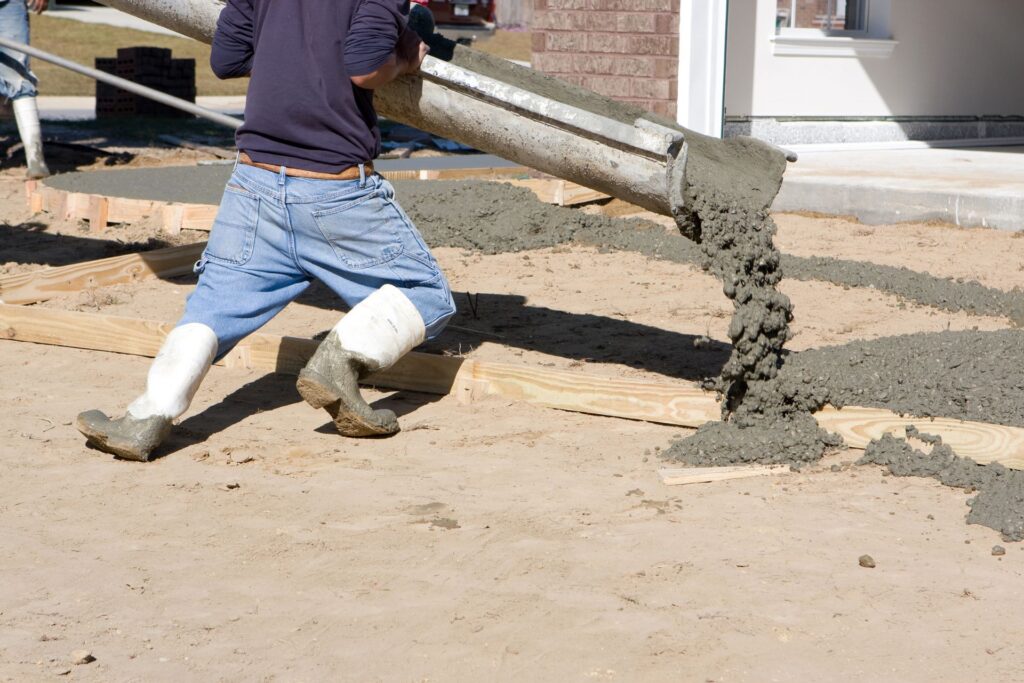
Alternative Solutions
Floating Slab Method
The floating slab method is an alternative foundation solution often used in residential and light commercial construction. A floating slab, as the name suggests, is a concrete slab that “floats” on the ground without the need for deep footings. This method is particularly appropriate for areas with stable soil conditions where there is minimal risk of significant soil movement.
Explanation
A floating slab foundation consists of a continuous slab of concrete that is laid directly on the ground. The edges of the slab are often thicker to provide additional support, and they may include reinforcement with steel bars or mesh. The slab itself typically ranges from 4 to 6 inches in thickness.
When it’s appropriate
Stable Soil Conditions: This method works best in areas where the soil is relatively stable and not prone to significant shifting or settling. It is ideal for regions without expansive clay or other problematic soil types.
Light Structures: Floating slabs are suitable for light structures such as garages, sheds, and smaller residential buildings. They are not generally recommended for heavy buildings or those with significant structural loads.
Cost-Effective: For projects with tight budgets, the floating slab method can be a cost-effective alternative to more complex foundation systems. It requires less excavation and fewer materials, which can reduce overall construction costs.
Speed of Construction: The simplicity of the floating slab method allows for quicker construction times, making it a favorable option for projects with tight schedules.
Overall, the floating slab method is a versatile and economical solution for specific construction needs, providing adequate support while keeping costs and construction time to a minimum.
Pier and Beam Foundations
Pier and beam foundations offer another alternative to traditional concrete slab foundations. This method involves constructing a framework of piers and beams to support the building. Each pier is typically made of concrete, wood, or steel, and they are strategically placed to bear the structural load of the building. Beams are then laid across these piers to create a stable platform for the construction of the floor and the rest of the building.
Overview
Pier and beam foundations elevate the building above the ground, which can be particularly beneficial in areas prone to flooding or where the soil has poor load-bearing capacity. The piers transfer the load of the structure down to the deeper, more stable layers of soil, while the beams distribute the weight evenly across the foundation.
Benefits for certain types of construction
Flood-Prone Areas: Elevating the structure above the ground can help prevent flood damage, making pier and beam foundations ideal for areas with high water tables or frequent flooding.
Poor Soil Conditions: In regions where the soil is not suitable for a slab foundation due to poor load-bearing capacity or expansive soil conditions, pier and beam foundations provide a stable and secure alternative.
Accessibility: The crawl space created by a pier and beam foundation makes it easier to access plumbing, electrical wiring, and other utilities for maintenance and repairs. This can save time and money in the long run.
Flexibility: Pier and beam foundations offer greater flexibility in terms of design and construction. They can be adjusted to accommodate various site conditions and architectural styles, making them suitable for a wide range of projects.
Moisture Control: Elevating the structure helps to keep moisture away from the floor and lower parts of the building, reducing the risk of mold and rot, which can be significant issues in humid climates.
In conclusion, pier and beam foundations provide a robust and adaptable foundation solution for buildings in challenging environments. Their benefits, including improved flood resistance, better access for maintenance, and suitability for poor soil conditions, make them a preferred choice for many builders and homeowners.

FAQs: About Is It OK to Pour Concrete On Dirt?
Can you pour concrete directly on dirt?
Pouring concrete directly on dirt is generally not recommended. Dirt needs to be properly compacted and ideally layered with gravel to create a stable base that prevents settling and cracking.
Why is a stable base important for concrete?
A stable base is crucial for preventing issues such as uneven surfaces, cracks, and premature wear. It ensures the concrete cures evenly and maintains its structural integrity.
What are the risks of pouring concrete on an unprepared dirt base?
Risks include settling, which leads to uneven surfaces, cracking due to poor support, and moisture problems that can weaken the concrete over time.
How do you prepare dirt for pouring concrete?
Site preparation involves clearing debris and vegetation, leveling the surface, compacting the dirt, adding a gravel layer for drainage, and possibly installing a vapor barrier to prevent moisture issues.
What is the purpose of a gravel base under concrete?
A gravel base provides drainage, which prevents water from pooling under the concrete. It also adds stability, reducing the risk of settling and cracking.
What tools are needed to compact dirt before pouring concrete?
Tools for compacting dirt include a hand tamper for small areas or a plate compactor for larger areas. These tools help achieve the necessary compaction for a stable base.
Can I use sand instead of gravel under concrete?
Sand can be used but is often less effective than gravel for drainage and stability. Gravel provides a more stable and well-draining base for concrete.
What is a vapor barrier and why is it important?
A vapor barrier is a plastic sheet placed under the concrete slab to prevent moisture from the ground from penetrating the concrete. This helps prevent issues like cracking and weakening of the concrete.
Is it necessary to use reinforcement like rebar or wire mesh in concrete?
While not always necessary, using reinforcement like rebar or wire mesh significantly increases the strength and durability of the concrete, especially for larger projects or load-bearing applications.
What are some common myths about pouring concrete?
Common myths include the idea that concrete can be poured directly on any surface, that reinforcement isn’t necessary for small projects, and that adding extra water makes concrete easier to work with. These misconceptions can lead to poor results and structural issues.
Conclusion
Proper base preparation is critical for concrete projects, ensuring durability and longevity. To summarize, neglecting this step can lead to issues such as cracking and uneven surfaces. So, is it OK to pour concrete on dirt? The definitive answer is no; a well-prepared base of compacted gravel or sand is essential to provide the necessary support. We encourage you to share your experiences, ask questions, or seek professional advice to ensure the success of your concrete projects. Your feedback and inquiries help us provide better guidance and solutions tailored to your needs.
About the Author:
Mike Veail is a recognized digital marketing expert with over 6 years of experience in helping tradespeople and small businesses thrive online. A former quantity surveyor, Mike combines deep industry knowledge with hands-on expertise in SEO and Google Ads. His marketing strategies are tailored to the specific needs of the trades sector, helping businesses increase visibility and generate more leads through proven, ethical methods.
Mike has successfully partnered with numerous companies, establishing a track record of delivering measurable results. His work has been featured across various platforms that showcase his expertise in lead generation and online marketing for the trades sector.
Learn more about Mike's experience and services at https://theleadguy.online or follow him on social media:

